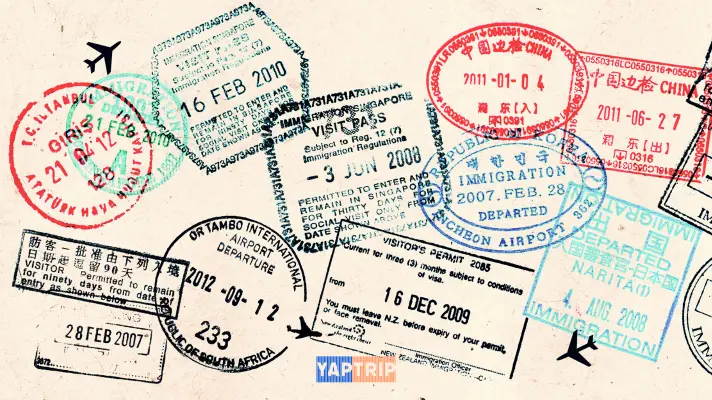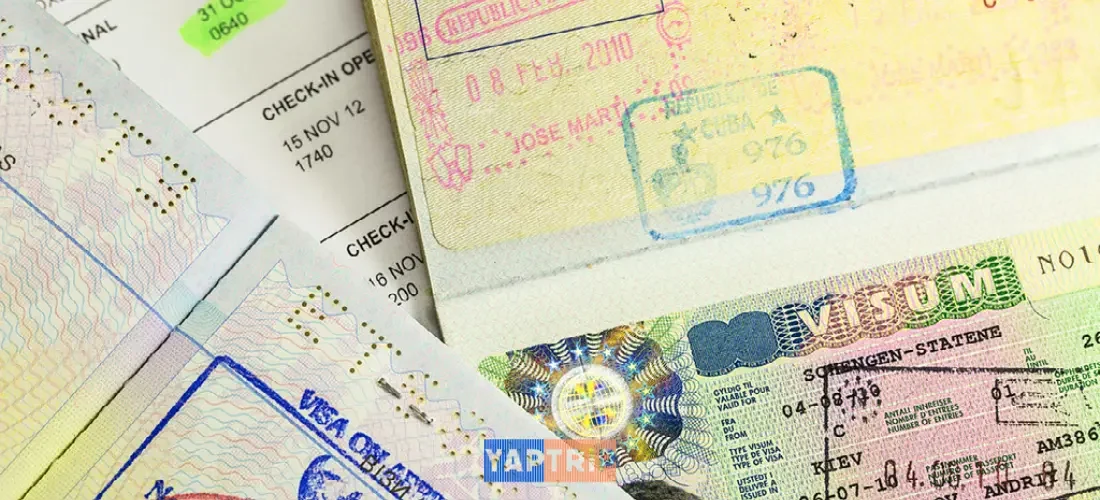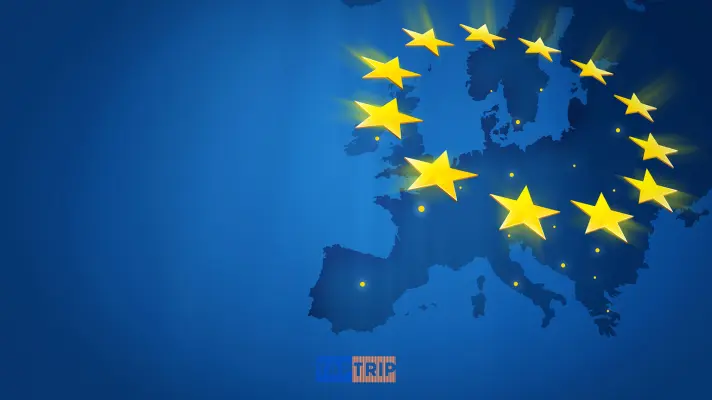ETIAS – European Travel Information and Authorization System
The European Union’s recent development, the European Travel Information and Authorization System (ETIAS), has captured the interest of many international travelers. The primary objective of this system is to strengthen the EU’s borders and improve the security of its citizens and tourists. This article will provide comprehensive information about the “ETIAS eligibility”, an essential aspect for travelers.
What is ETIAS?
ETIAS, or European Travel Information and Authorization System, is a visa waiver program implemented by the European Union. It is designed to pre-screen travelers from visa-exempt countries visiting the Schengen Zone. The system ensures that the individuals meet all ETIAS requirements before entering the EU.
Overview of ETIAS
The main aim of the ETIAS is to enhance security within the EU borders. It aids in identifying any security or irregular migration risks before individuals set foot in the Schengen area. Similar to the American ESTA, the ETIAS is an electronic system which requires no direct contact with consulates or embassies. Those planning to travel to Schengen countries should be aware of their ETIAS eligibility as it’s a critical part of the planning process.
ETIAS Similar to ESTA
ESTA (Electronic System for Travel Authorization) is an automated system that determines eligibility of visitors to travel to the United States under the Visa Waiver Program (VWP). ETIAS functions much like the ESTA, but for the Schengen Zone. It screens travelers before their arrival, ascertaining their eligibility and security risks.
How can I use ETIAS?
As a traveler, you might wonder about the different purposes ETIAS serves. The scope of ETIAS extends beyond just tourism; it encompasses business, medical, and transit purposes as well.
Purpose of ETIAS
The ETIAS primarily aims to improve security within the Schengen area by evaluating potential threats among visa-exempt third-country nationals. It also facilitates border management and helps travelers avoid unnecessary complications during their stay. Furthermore, it streamlines the process of identifying individuals who might pose a security risk.
ETIAS for Business, Tourist, Medical, and Transit Purposes
Travelers with a valid ETIAS authorization can visit the Schengen Zone for business meetings, tourism, medical treatment, or transit to other destinations. It is important to note that the ETIAS is not a work visa. If your main purpose for visiting the Schengen Zone is to work, you will need a separate work permit or visa. To get detailed information on different use cases, visit ETIAS travel authorization with limited validity.
ETIAS for Schengen Visa-Free Countries
Citizens from Schengen visa-free countries are required to apply for ETIAS authorization. The EU office warns Georgians on ETIAS and other countries about the importance of obtaining a valid authorization before travel.
Who will need ETIAS?
Understanding “ETIAS eligibility” is essential for every traveler planning to visit the Schengen Zone. Let’s dive into the specifics of who will and won’t require ETIAS.
Nationals of visa-exempt countries
ETIAS has been designed primarily for nationals of countries who can currently travel to the Schengen Area without a visa.
Nationalities Who Need to Apply for ETIAS
As of late 2023, travelers from over 60 visa-exempt countries, including the United States, Canada, Australia, and New Zealand, are required to have ETIAS authorization. It’s best to check the official list of who needs ETIAS to ensure you’re prepared.
Visa-exempt Citizens and ETIAS
Visa-exempt citizens need ETIAS to ensure a safer and more secure travel environment. The authorization is easy to obtain, and travelers can do it from the comfort of their homes. However, remember that ETIAS requirements must be met before the application.

Who Will Need a Visa Instead of ETIAS?
While ETIAS targets visa-exempt countries, travelers from other regions may need a traditional visa or other permits.
Nationals of visa-required countries
Travelers from countries that are currently required to obtain a Schengen visa will continue to do so, even with the introduction of ETIAS. The ETIAS is not intended to replace the Schengen visa but is designed for nationals of visa-exempt countries.
Visa or Other Permit for Longer Stays
ETIAS allows stays for up to 90 days within a 180-day period. If a traveler intends to stay in the Schengen area for more than 90 days, work, study, or for other reasons, they will need to apply for the appropriate visa or permit instead of ETIAS. Be aware of the ETIAS fees associated with the application process.
Do I Still Need to Register for ETIAS if I Have a Visa?
In the case of already having a visa, the requirement for ETIAS might seem ambiguous.
ETIAS Checker
The ETIAS checker helps to ascertain whether you require ETIAS authorization in addition to your current visa. It’s recommended to run your details through the ETIAS check to be certain.
Visa or Other Permit for Longer Stays
As mentioned earlier, for stays longer than 90 days or for reasons other than tourism, medical treatment, transit, or business, a traditional visa or other permits will be required, even with the implementation of ETIAS.
Who Is Exempt from ETIAS?
Some nationals are exempted from the ETIAS requirement.
Nationals of Andorra, San Marino, Monaco, the Holy See (the Vatican City State) or Ireland
Nationals of Andorra, San Marino, Monaco, the Holy See (the Vatican City State) or Ireland will not require ETIAS authorization. They enjoy specific arrangements with the EU, allowing them to travel without any additional travel authorization.
ETIAS Exemptions
For a comprehensive understanding of ETIAS exemptions, it’s beneficial to read the detailed information on who is exempt from ETIAS.
Did you know? Rejection of ETIAS application can occur if the ETIAS requirements are not met. Find out more about reasons ETIAS applications get rejected and how to appeal.

How do I apply for ETIAS authorization?
As we dive into the process of “ETIAS eligibility” and application, let’s look at what information you will need, the costs involved, and the timeframes you can expect.
ETIAS Application Process
Applying for ETIAS is intended to be a simple, fast online process that can be completed without needing to visit a consulate or an embassy.
Required Information and Documents for ETIAS Application
The application requires a series of basic information such as full name, date and place of birth, nationality, and passport details. It also includes security-related questions. To find out more about the required documents, check the ETIAS application page.
ETIAS Application for Minors and Family Members of EU Citizens
Minors and family members of EU citizens also need to fulfill the ETIAS requirements. However, there may be special cases where you might want to consider applying for ETIAS on behalf of others.
How much will the ETIAS cost?
An important aspect of the ETIAS application process is the cost involved.
ETIAS Cost Information
The fee for ETIAS application is €7 for applicants over 18. For minors, the application is free of charge. Detailed information on the cost can be found here: 7 myths and facts about ETIAS.
How long will ETIAS approval take?
Once the application is submitted, how long does it take to get approved?
Expected Processing Time for ETIAS Application
The processing time for ETIAS applications is usually quick, with most authorizations granted within minutes. However, some applications could take up to 96 hours. For a more detailed timeline, review the ETIAS application process.
How long is the ETIAS valid?
Understanding the validity of ETIAS is important in planning your travel.
Validity Period of Approved ETIAS
An approved ETIAS is generally valid for three years or until the end of the validity of the travel document registered during application, whichever comes first. Learn more about the validity period and eligible countries for ETIAS.
What if my ETIAS application is denied?
In the unfortunate event of an ETIAS application denial, there are steps you can take.
ETIAS Denial and Appeal Process
Applicants have the right to appeal if their ETIAS application is denied. Knowing the possible reasons and how to appeal an ETIAS denial can be helpful in such scenarios.
How many times can I enter the EU with an ETIAS?
One of the key advantages of the ETIAS authorization is the ease of multiple entries into the Schengen area.
ETIAS and Multiple Entries into the Schengen Area
An approved ETIAS allows multiple entries into the Schengen area. However, the duration of stay should not exceed 90 days within any 180-day period.
Do I need travel insurance to apply for ETIAS?
Although travel insurance is not a compulsory requirement for ETIAS, it’s highly recommended for travelers.
Did you know? ETIAS eligibility depends on a variety of factors including nationality, security risks, and travel history. Proper research and preparation can lead to a smooth application process.






